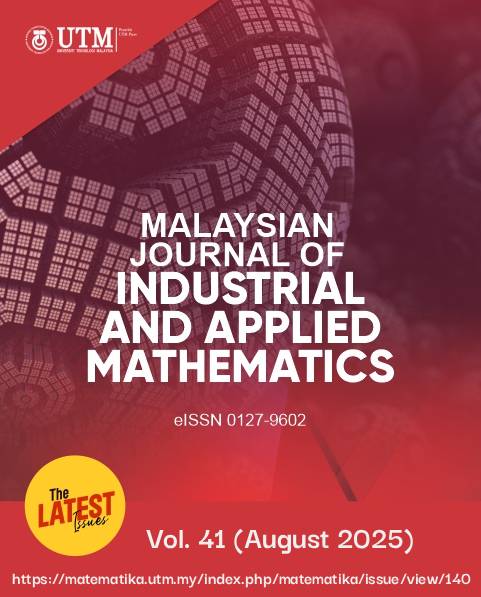Sakiadis Flow with Thermal Radiation and Richardson Number via Inclined Stretching Plate
DOI:
https://doi.org/10.11113/matematika.v41.n2.1628Abstract
This study aims to elucidate a steady two-dimensional laminar mixed convection boundary layer over an inclined stretching plate immersed in an incompressible viscous fluid. The governing partial differential equations (PDEs) are first reduced to ordinary differential equations (ODEs) using a similarity transformation, before being solved numerically using MATLAB software, which is based on the boundary value problem fourth order (bvp4c) method. The effects of the radiation parameter, angle of the plate, Richardson number, and the Prandtl number on the heat transfer and fluid flow characteristics are obtained and discussed. The impacts of flow constraints on the velocity profile, temperature profile, heat transfer rate and skin friction coefficients are presented in tables and figures. The observation indicates that the rate of heat transfer at the surface rises with increases in the Richardson number, and inclination of plate angle but it diminishes as the radiation parameter increases. Meanwhile, the drag force experiences a decrease with an increase in radiation and the inclination of the plate angle. However, it demonstrates an increase with the rise values of Richardson number and Prandtl number. This leads to enhanced buoyancy-driven flow effects, ultimately resulting in a reduced skin friction along the surface Moreover, a further analysis using Computational Fluid Dynamics (CFD) simulation is applied to solve the governing equations of flow in interesting applications, enhancing the understanding of boundary layer flow.


















